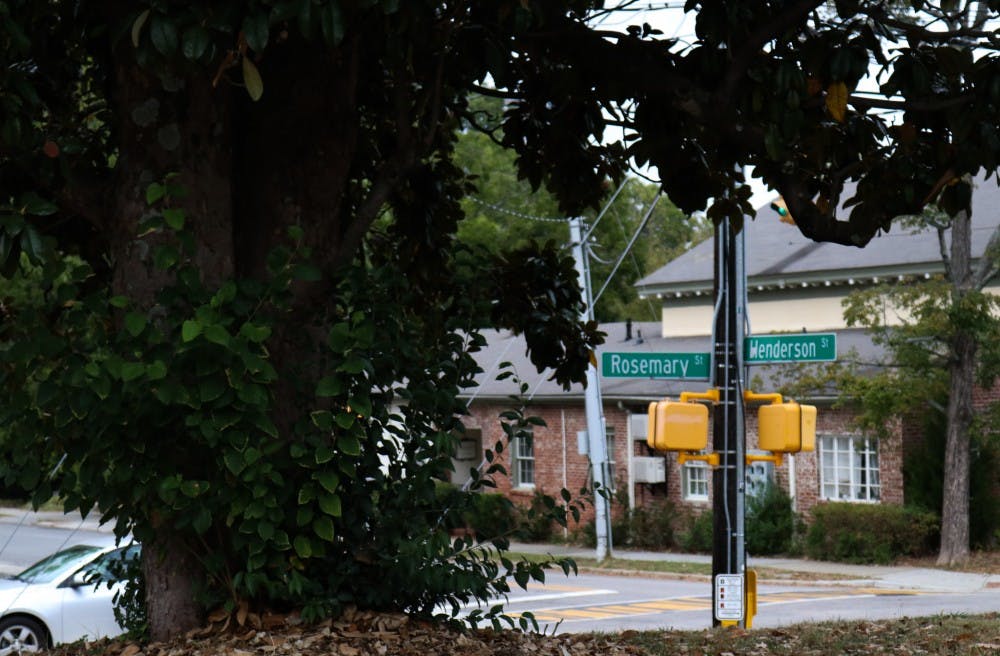Older trees exhibiting symptoms of disease and illness are examined by the town arborist, Smith said, who determines if the tree must come down.
Everhart said in many instances, those trees have been identified as a threat to public safety.
“One of the trees that came down recently was on West Franklin, and they took it down because one of its limbs fell and nearly really hurt somebody," Everhart said. "In a situation like that, it’s sort of hard to justify keeping a tree around like that, that might be posing a legitimate threat to people or property in a high traffic area of town."
Smith said that while attempting to save a diseased tree might seem like a plausible solution, it’s often very costly. And with a team of three individuals working on Chapel Hill’s trees, it’s difficult to devote time and attention to all of the diseased trees in the area.
He said treating a large tree could cost up to $1,000.
When Smith has attempted to remove trees that pose a threat to public safety, he gets significant pushback from Chapel Hill residents.
“I’ve had rocks thrown at me," Smith said.
One tree, on the corner of Rosemary and Henderson Street, attracted a group of demonstrators protesting its removal.
"It had dropped a limb and hit a pedestrian, and later on in the week it had dropped a limb and gone through the windshield of a car," Smith said. "It was dead dead, and we had 12 people around it protesting. It’s a challenge, and it is emotionally debilitating.”
Everhart said while residents often disapprove of decisions to take down massive trees, it's often the only solution.
“I am a die-hard lover of trees and, on the planning commission, I advocate tirelessly for people to remove fewer trees than they have to from their developments," Everhart said. "But in some situations, it sort of is the best thing to do."
One argument against tree removal stems from the fear of contributing to the urban heat island effect.
To get the day's news and headlines in your inbox each morning, sign up for our email newsletters.
“Urban or metropolitan places tend to be hotter than rural places because of human activity," Adam Nicholson, senior planner-design for the Town of Chapel Hill, said. "So when you have less trees, less vegetation, more asphalt and concrete that are darker materials (and) more buildings, that drives up temperatures."
Everhart said the town is well aware of the high removal rates of its trees. The town is working on finding feasible solutions to ensure it isn't contributing to the heat island effect, and instead is protecting Chapel Hill’s reputation of being a green community.
The mayor's office in Chapel Hill has instigated a tree planting committee, Everhart said. While the committee isn't fully formed, it's a sign that the town recognizes the problem.
Everhart is also working on a program called Carolina TreeCycle, which aims to recycle removed trees into lumber that can be repurposed by the UNC community.
"This is potentially a good direction we could take in the town as well — to sort of make lemonade as it were, from the fact that these trees do sometimes die," Everhart said. "They don’t have to be totally lost. They can live on as lumber than can be used for the public good.”
university@dailytarheel.com



